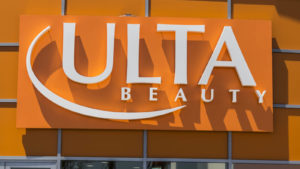Investing in the best retail stocks can be an enticing prospect, but it’s imperative to tread with caution. Shoppers have fueled much of the retail sales growth we’ve seen by spending more on gasoline and other essential goods, a silver lining against the backdrop of spiraling inflation. Yet, these promising figures serve as a double-edged sword. That’s because while they provide a glimmer of hope for those anticipating we may be able to ward off a recession, they still leave us with lukewarm projections for second-quarter economic growth.
A total plunge in consumer spending seems unlikely. However, it’s more likely we’ll see a potential slowdown in discretionary spending, courtesy of stubbornly high inflation and a softening labor market. As we navigate these murky waters, investors should show caution, particularly when investing in retail stocks.
Amid this complex landscape, these seven high return retail stocks emerge as promising picks. These companies offer a relative safe harbor in the swirling economic storm.
Lululemon (LULU)

Leading athletic apparel retailer Lululemon (NASDAQ:LULU) continues to flex its financial muscle on the back of a superb first-quarter earnings report. Unlike its retail siblings entangled in the economic quicksand, Lululemon strides forward with considerable aplomb, kindling investor faith.
The love affair between Americans and Lululemon’s high-quality athletic apparel is quite evident. The brand’s first-quarter revenue swelled to $2 billion, a massive 24% bump from the previous year. Moreover, international admiration for Lululemon is also growing rapidly, especially in China, where sales have skyrocketed 60% higher year-over-year.
This burgeoning growth isn’t a mere flash in the pan. Under its compelling “Power of Three x2” plan, Lululemon provides a promising financial forecast 2023. This plan includes expectations of $9.48 billion in sales, representing hefty 17% growth, and impressive earnings per share of $11.84.
Walmart (WMT)

Walmart (NYSE:WMT) remains a titan in the retail space, luring in bargain hunters with its irresistible everyday low prices. Thanks to its massive scale, the company is masterfully pulling the pricing lever, ensuring its gleaming beacon attracts customers amid shifting economic conditions.
The company’s first-quarter earnings report painted a vibrant picture for the firm. Walmart’s sales swelled a robust 7.6%, and operating income surged an impressive 17.3%. These results have been driven by an impressive shift in the company’s clientele base. Indeed, it’s not just the traditional frugal consumers flocking to the retailer, but high-income shoppers too. This broad-based surge in demand indicates a massive promising growth trajectory for the business.
However, Walmart isn’t resting on its laurels. A glance at the digital sphere shows its e-commerce division is blossoming, with a global growth rate of 26% in the first quarter. As the world’s largest retailer, Walmart is well-positioned to capture more market share in the digital domain, an ambition within its grasp.
Nike (NKE)

Nike’s (NYSE:NKE) shares are lacing up for the long run, despite the temporary dip in its performance sparked by investor anxieties over inventory levels. These concerns seem to be casting an outsized shadow, obscuring the power of the brand’s broader business activities.
Nike’s recent quarterly results presented a patchwork of outcomes, with top-line revenues speeding ahead of estimates, but earnings losing steam. Indeed, it was the first time Nike didn’t outpace earnings expectations in three years. Moreover, a touch of caution colored the company’s forward guidance. Nevertheless, Nike beat sales estimates by a robust $240 million, with the Greater China market leading the charge.
Analysts at TipRanks aren’t ready to bench this athletic behemoth, assigning a moderate buy rating with a potential upside of 22% from current levels. Adding fuel to this bullish sentiment, hedge funds bumped their stake by 135,200 shares in the latest quarter.
Dick’s Sporting Goods (DKS)

As the mercury soars, so do the fortunes of top sporting equipment retailer Dick’s Sporting Goods (NYSE:DKS). The renowned retailer operates over 850 stores across the U.S., including its eponymous brand and other favorites such as Golf Galaxy and Public Lands.
More importantly for its shareholders, Dick’s Sporting Goods has been on a roll, becoming a leading dividend challenger, boasting a nine-year streak of dividend hikes. Its massive scale has powered an almost 25% compound annual growth rate (CAGR) in payouts over the past five years.
First-quarter earnings painted a buoyant picture, featuring a revenue increase of 5% from the previous year to $2.84 billion despite the headwinds. The company clocked earnings per share of $3.40, outstripping analysts’ expectations. With its reaffirmed full-year earnings-per-share outlook between $12.90 and $13.80 and comparable store sales expected to improve by up to 2%, the summer isn’t the only thing heating up for the company.
Ulta Beauty (ULTA)

Ulta Beauty (NASDAQ:ULTA) has been adorning the retail space with resilience. While many retail stocks struggled to find their footing in the past year, Ulta was an exception. The company ended the year with impressive gains, which exceeded 20%.
Hailing from Bolingbrook, Illinois, Ulta claims the title of the largest U.S. beauty retailer. Ulta serves as a haven for cosmetics, fragrances, skincare, and hair care products, offering premium salon services. Its performance over the past several years does justice to its premier status, with robust operational metrics, particularly in revenue and EBITDA growth trends. The company also touts consistent profitability, boasting a trailing-year net margin of 12% that outshines nearly all of its competitors.
With a substantial brick-and-mortar presence of over 1,350 locations in the U.S., Ulta aims to expand its colossal footprint further. On top of that, its e-commerce business has grown by over 27% over the last five years, fortifying Ulta’s position further.
Kroger (KR)

Kroger (NYSE:KR) is a formidable titan in the supermarket and multi-department store domain and is essentially a sanctuary for those seeking stable dividend stocks. In an ever-fluctuating economy, people’s need for nourishment remains constant, which bodes remarkably well for the company.
Though the firm fell slightly short on expectations for its first quarter revenue, it triumphed on the bottom line. The company achieved year-over-year growth across both its top- and bottom-lines. Consumer spending remains resilient, yet shows a tilt towards essentials and away from discretionary items. Moreover, should the economy teeter towards a recession later in the year, Kroger stands to gain from consumers trading down.
An added incentive for investors is the company’s secure dividend, yielding a tidy 2.45%. Moreover, Kroger has demonstrated commitment to shareholders with its impressive 16-year streak of increasing dividends.
Macy’s (M)

Retail giant Macy’s (NYSE:M) has seen its stock price drop by roughly 22% year-to-date. Moreover, it trades at just 0.2-times forward sales estimates and appears priced for calamity.
Sure, the retailer witnessed a considerable 7.2% slump in comparable sales last quarter, but it hasn’t lost sight of the bigger picture. Despite this bump in the road, Macy’s pulled delivered respectable earnings per share of 56 cents, excluding certain items. Yes, the company slightly trimmed its full-year sales outlook and nudged its adjusted earnings per share guidance range from $2.70 to $3.20 from $3.67 to $4.11.
Still, the company’s current valuation holds its charm for the discerning investor. And there’s a glimmer of hope as consumer spending on goods is expected to rise later this year, benefiting this retail stalwart.
